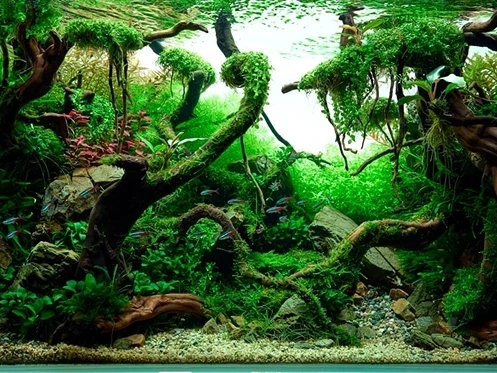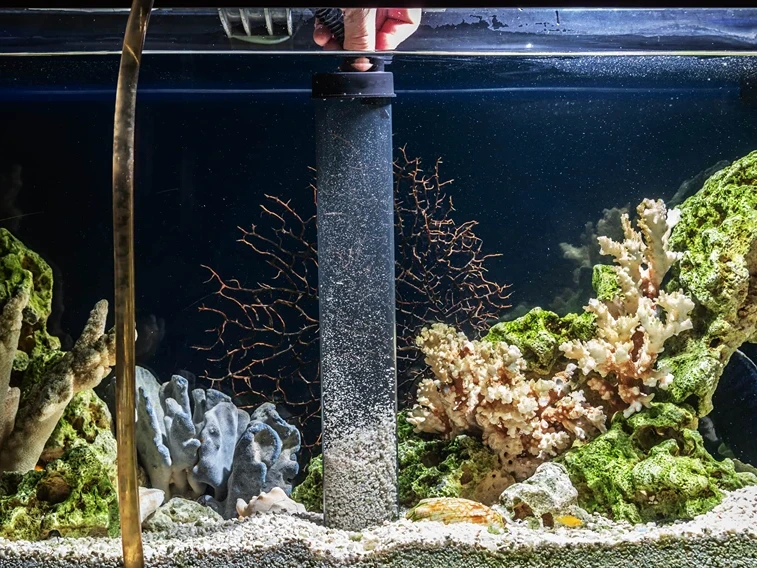Maintaining a clean and healthy aquarium is not just about aesthetics; it’s crucial for the well-being of your aquatic life. Whether you’re a seasoned aquarist or a beginner, understanding the essentials of aquarium cleaning can significantly impact the health and happiness of your fish and plants. From the tools you’ll need to a step-by-step cleaning guide, this article covers everything you need to ensure your aquatic environment thrives.
Jump to:
Key Takeaways
- Essential Tools: A list of must-have tools for effective aquarium cleaning.
- Step-by-Step Cleaning Guide: Detailed instructions for each cleaning stage.
- Maintaining Between Cleanings: Tips for daily, weekly, and monthly maintenance tasks.
Register for our latest in-depth reviews and product round-ups from the experts
Enter your email address below to receive our twice monthly reviews emails.
By entering your details, you are agreeing to our terms and conditions and privacy policy. You can unsubscribe at any time.
Introduction to the Importance of Aquarium Cleaning
A clean aquarium is the cornerstone of a healthy aquatic environment. Regular maintenance not only keeps your tank looking beautiful but also ensures optimal water quality, crucial for the survival of fish and plants. Neglecting aquarium cleaning can lead to algae overgrowth, toxin buildup, and ultimately, unhealthy or even fatal conditions for your aquatic life.

Essential Tools and Supplies for Effective Cleaning
Before diving into the cleaning process, it’s important to gather the right tools. These are not just aids but necessities for keeping your aquarium in top condition.
What You’ll Need:
- Algae Scraper/Pad: For removing algae from the glass.
- Siphon Hose/Gravel Vacuum: Essential for cleaning the substrate and performing water changes.
- Water Conditioner: To remove chlorine and chloramine from tap water, making it safe for fish.
- Aquarium-Safe Cleaners: For decorations and the exterior of the tank.
- Filter Media and Brush: For cleaning and replacing the filter components.
Table 1: Essential Aquarium Cleaning Tools
| Tool | Use |
| Algae Scraper/Pad | Removing algae from tank walls |
| Siphon Hose/Gravel Vacuum | Cleaning substrate and water changes |
| Water Conditioner | Making tap water safe for aquatic life |
| Aquarium-Safe Cleaners | Cleaning decorations and tank exterior |
| Filter Media and Brush | Maintaining and cleaning filters |
Step-by-Step Guide to Cleaning Your Aquarium
Cleaning your aquarium efficiently requires a systematic approach. Here’s how to do it right:
Preparing Your Aquarium for Cleaning
Safety first! Ensure your fish and plants are not stressed during the cleaning process. Turn off electrical equipment like heaters and filters to prevent accidents.

Cleaning the Interior Glass
Start with the glass. Use an algae scraper or pad to gently remove any algae buildup. Be thorough but gentle to avoid scratching the glass.
Substrate Cleaning
The substrate is where most of the waste accumulates. Use a siphon hose or gravel vacuum to clean the gravel. This not only removes debris but also prevents the buildup of harmful toxins.
Filter Maintenance
The filter is the heart of your aquarium’s ecosystem. Clean or replace the filter media as recommended by the manufacturer. Use a brush to remove debris from the filter’s parts.
Water Change Techniques
Changing some of the water regularly is crucial for maintaining water quality. Remove and replace 20-30% of the tank’s water every two weeks. Use a water conditioner to treat tap water before adding it to the aquarium.
Maintaining Your Aquarium Between Cleanings
Regular maintenance is key to preventing the need for major cleanups. Here are some tips to keep your aquarium clean between scheduled cleanings:
- Daily: Check the water temperature and filter operation. Remove any visible debris or dead leaves.
- Weekly: Test water parameters (pH, ammonia, nitrite, and nitrate levels) and adjust as necessary.
- Monthly: Inspect all equipment and perform a partial water change.

Advanced Aquarium Care: Tackling Algae and Common Challenges
After establishing a routine for basic aquarium maintenance, it’s time to address more advanced aspects of aquarium care. This includes managing algae overgrowth, solving common cleaning challenges, and answering frequently asked questions by aquarium enthusiasts. By mastering these areas, you can ensure your aquarium not only looks great but also provides a healthy environment for its inhabitants.
Dealing with Algae Overgrowth
Algae can be a persistent issue in many aquariums, detracting from the aesthetic appeal and potentially harming aquatic life by consuming vital nutrients and oxygen.
Types of Algae and Removal Strategies
- Green Algae: The most common type, easily managed with regular cleaning and water changes.
- Brown Algae: Often occurs in new tanks; can be reduced by increasing light levels and adding algae-eating fish.
- Black Beard Algae: Tough to remove; treated with specific algaecides or manual removal.
Table 2: Algae Types and Removal Strategies
| Algae Type | Characteristics | Removal Strategies |
| Green Algae | Common, easy to clean | Regular maintenance, water changes |
| Brown Algae | Occurs in low light | Increase lighting, add algae eaters |
| Black Beard Algae | Stubborn, hard to remove | Use algaecides, manual removal |

Addressing Common Cleaning Challenges
Sometimes, despite regular maintenance, you might encounter stubborn issues. Here are solutions to some common challenges:
- Cloudy Water: Often caused by overfeeding or overstocking. Reduce feed and consider a more efficient filtration system.
- Odor: A sign of decay or poor water quality. Perform a water test and clean or replace the filter media.
- Snail Overpopulation: Can be controlled by introducing snail-eating species or manually removing snails.
Table 3: Preventing Common Aquarium Issues
| Issue | Prevention Tips |
| Algae Growth | Limit light, regular cleaning, control nutrients |
| Cloudy Water | Avoid overfeeding, proper filtration |
| Odor | Regular maintenance, check water quality |

FAQs: Common Questions About Aquarium Cleaning
For optimal health, perform partial water changes every two weeks and a thorough cleaning once a month.
Yes, but use caution. Avoid drastic changes and use aquarium-safe products.
Use a dedicated aquarium cleaner or soak in hot water. Avoid harsh chemicals.
Tap water should be treated with a water conditioner to remove chlorine and chloramines before use.
Limit light exposure, avoid overfeeding, and perform regular water changes.
Martin Cochran
Dive into fish care with Martin, your guide from the coastal beauty of Brighton. He shares tips on keeping your aquatic companions happy and healthy. Join him on a fin-tastic journey where every swim is a voyage of joy. Trust Martin for a smooth sailing aquatic experience.




